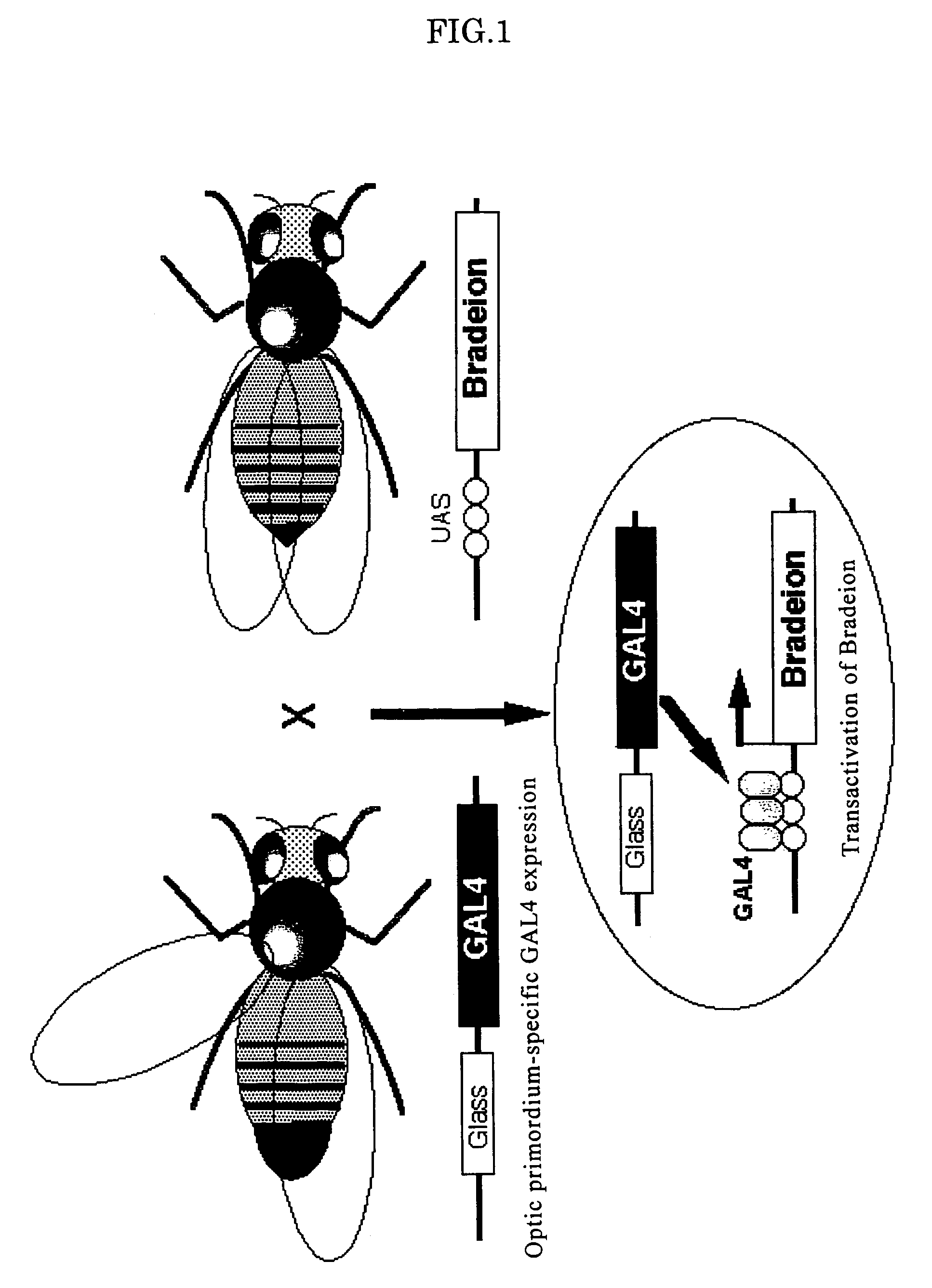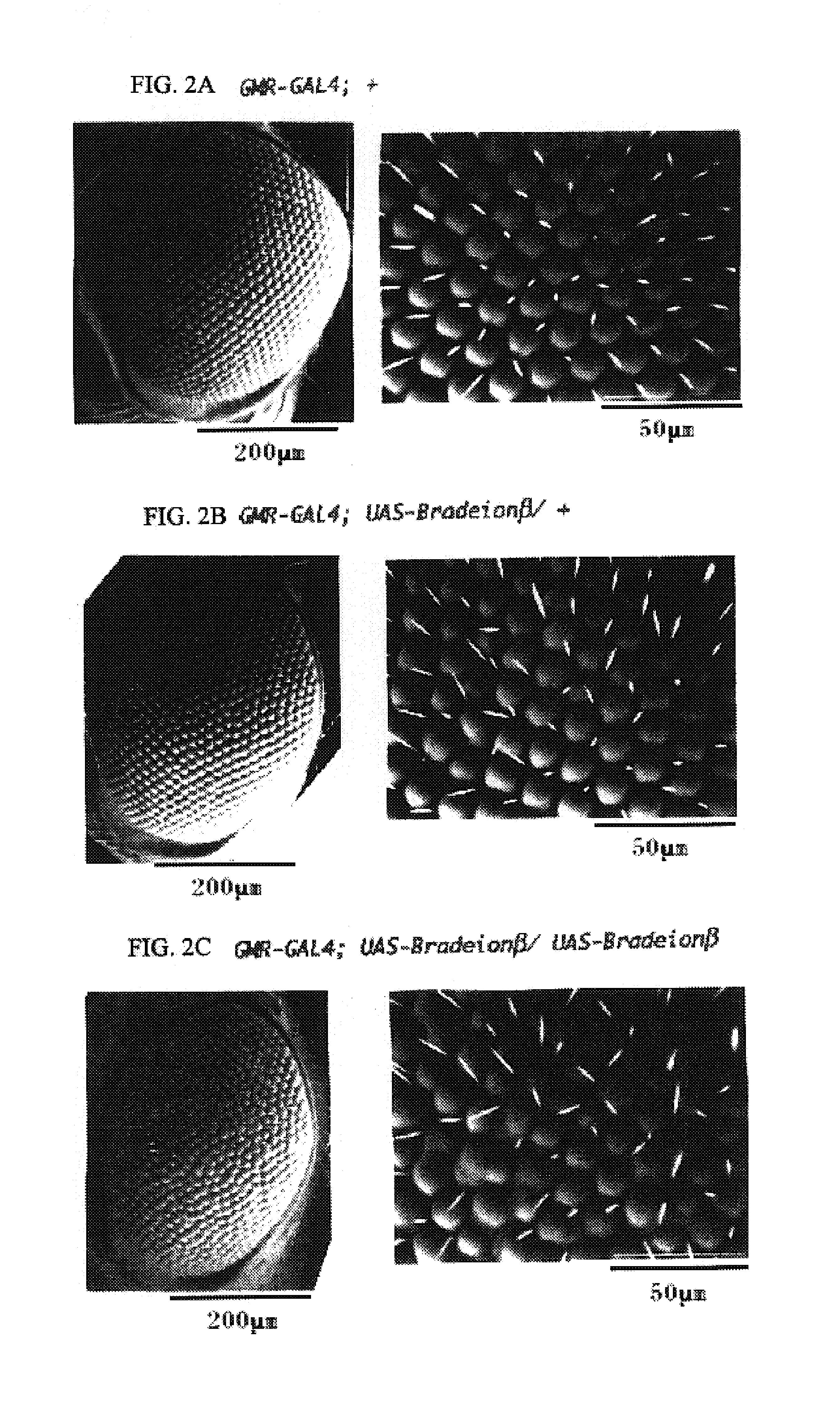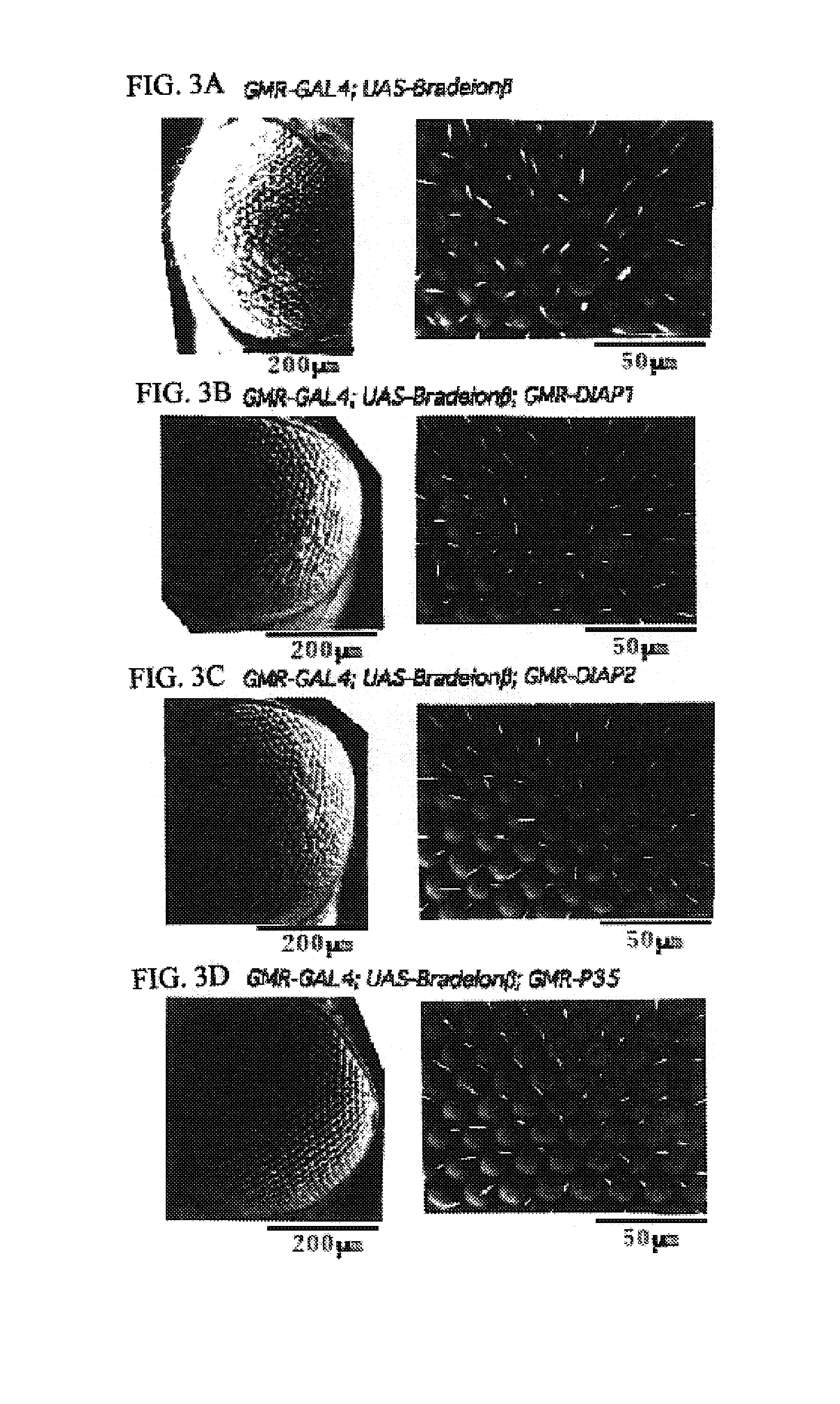Drosophila strain carrying bradeion gene(s) transferred thereinto
a technology of bradeion gene and drosophila strain, which is applied in the field of special drosophila strain, can solve the problems of limited application range and successful examples of knockout mice, inability to say to be organism models that can satisfy broad demands, and inability to generate knockout mice and transgenic mi
- Summary
- Abstract
- Description
- Claims
- Application Information
AI Technical Summary
Benefits of technology
Problems solved by technology
Method used
Image
Examples
example 1
[0033]Bradeion cDNA was ligated to Xho I-EcoR I (blunt-ended) cleavage site located downstream of a promoter having a transcription factor GAL4 binding sequence of a pUAST vector (Brand, A. H. and Perrimon, N. (1993). Development, 118, 401-415), thereby obtaining a recombinant plasmid DNA (pUAST-Bradeion). The DNA was transferred into Escherichia coli for transformation, and then the bacteria were grown (FIG. 1).
[0034]pUAST-Bradeion DNA was purified using a Qiagen column, and then injected in a minute amount into the fertilized eggs of a Drosophila strain, which is white gene (−) and has a transposase gene (Spradling, A. C. (1986). Drosophila: a practical approach. Roberts, D. B. (ed.). IRL Press: Oxford, pp. 175-197), and then a transformant that was rescued with a white gene marker present within the pUAST-Bradeion DNA was selected (Robertson, H. M., Preston, C. R., Philips, R. W., Johnson-Schlitz, D. M., Benz, W. K. and Engels, W. R. (1988). Genetics, 118, 461-470). The thus esta...
PUM
| Property | Measurement | Unit |
|---|---|---|
| melting temperature | aaaaa | aaaaa |
| melting temperature | aaaaa | aaaaa |
| melting temperature | aaaaa | aaaaa |
Abstract
Description
Claims
Application Information
 Login to View More
Login to View More - R&D
- Intellectual Property
- Life Sciences
- Materials
- Tech Scout
- Unparalleled Data Quality
- Higher Quality Content
- 60% Fewer Hallucinations
Browse by: Latest US Patents, China's latest patents, Technical Efficacy Thesaurus, Application Domain, Technology Topic, Popular Technical Reports.
© 2025 PatSnap. All rights reserved.Legal|Privacy policy|Modern Slavery Act Transparency Statement|Sitemap|About US| Contact US: help@patsnap.com



